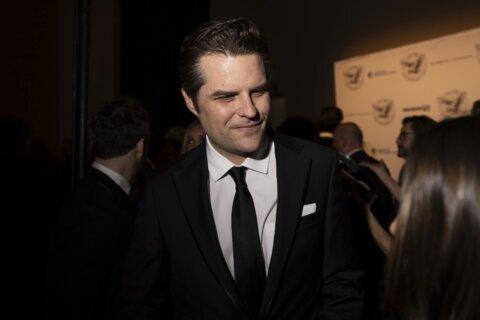The University of Maryland–College Park‘s 1,340-acre campus sits outside D.C., of course, but is just nine miles from downtown. Students say the school simply has everything — a huge selection of academic offerings and research opportunities, Division 1 athletics and proximity to a major city without giving up a traditional campus feel.
The school is enormous, diverse and extraordinarily lively, says Ruda Nighot, a 2021 economics grad from Hershey, Pennsylvania. “There’s something going on at all times.”
Although about 76% of the 30,875 undergraduates are from Maryland, the student body represents all 50 states and 123 countries, and 46% are students of color.
Despite UMD’s size, “it’s really easy to find a community of people,” says Andrew Nash, a senior electrical engineering major from Mount Airy, Maryland.
Many first-year students find friends through one of more than 30 academic-themed living-learning communities, as they live and take some classes as a group during their first few semesters. Many communities are connected to UMD’s honors programs or the College Park Scholars Program; students choose a focus from among themes like “Justice and Legal Thought” or “Environment, Technology and Economy.”
[READ: These Public Schools Offer an Honors College.]
Others are connected to programs like Hinman CEOs for entrepreneurship, the Jiménez-Porter Writers’ House for creative writing and CIVICUS for community service learning, leadership development and political engagement.
Alicia Perkovich, a junior from Syracuse, New York, says the Honors Humanities community allowed her to form close connections with faculty; her art history adviser alerted her to an on-campus internship at the Michelle Smith Collaboratory for Visual Culture. There, she gained technical experience working with metadata and photogrammetry — obtaining information about objects and the environment by analyzing photographs — which was useful for her history and art history majors.
Nash connected with other freshmen through the First-Year Innovation & Research Experience program, a faculty-mentored opportunity for more than 600 students to participate in group investigation of topics like molecular diagnostics, addiction science, sustainability and cloud computing. For his project on unmanned autonomous systems, Nash worked with his group to design a robot that could draw lines and shapes.
Research is ingrained in academic life across all departments and majors, says William A. Cohen, associate provost and dean for undergraduate studies. And proximity to research centers for the National Institutes of Health and other federal agencies creates pathways to internships and jobs. Over half of undergrads complete at least one internship.
[Read Why Undergraduate Research Matters in College.]
UMD’s 12 schools and colleges offer more than 90 majors, including strong programs in science, technology, engineering and math, or STEM. A unique degree in the College of Information Studies blends classes on web development, data analytics and cybersecurity with social sciences, leadership and humanities. Other schools include journalism, business, arts and humanities, education, agriculture, and behavioral and social sciences.
A new public policy degree and UMD’s Do Good Institute appeal to students who are passionate about social issues and are aiming to make a difference, with programs in social entrepreneurship, internships, volunteer opportunities and research grants.
In addition to courses in writing, math and diversity, students across all schools must complete two “I-Series” courses focused on such questions as how to solve poverty or the origins of life, and two “Scholarship in Practice” courses that teach the real-world work of a discipline. For example, an art course had students design a public art installation for UMD’s campus.
With an 18:1 student-faculty ratio, there are some larger classes, but fewer than 10% of classes have more than 100 students. Large classes are broken into smaller discussion groups led by a teaching assistant, and professors make themselves available during office hours.
[READ: 21 Places Worth Seeing on College Tours.]
Alongside academics, showing “Maryland pride” and cheering on the Terps is a big part of student life. “I think the atmosphere is probably one of the best,” Nash says.
Students also get involved in UMD’s more than 800 student organizations and activities, which include club and intramural sports, Greek organizations, TERP THON — which raises funds to support pediatric patients — and other service groups.
A highlight of the campus is the beloved statue of Testudo, UMD’s diamondback terrapin mascot, whose nose students rub for luck before finals. They also leave creative “offerings,” which have included traffic cones, couches and microwave ovens.
Just off campus in College Park, casual restaurants and coffee shops line Route One, popular spots for doing schoolwork or gathering with friends. A metro stop on campus provides easy access to D.C., and Baltimore, Annapolis and the Chesapeake Bay are each just over 30 minutes away by car.
More From the College Road Trip to Washington, D.C.:
— George Washington University
— The Catholic University of America
This story is excerpted from the U.S. News “Best Colleges 2022” guidebook, which features in-depth articles, rankings and data.
More from U.S. News
50 Questions to Ask on a College Visit
10 Steps to Choosing the Right College
10 Tips to Make Your Final College Choice
College Road Trip to Washington, D.C.: University of Maryland?College Park originally appeared on usnews.com







